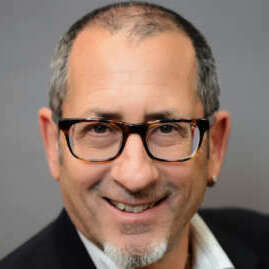Insight by Aon
Navigating climate risk using multiple models and data sets
Organizations need to take a complete view of the numerous models available to gage risk. Two reasons: One, models vary widely in their assumptions and in the data...
A holistic understanding of climate risks requires a multidimensional approach to data, risk models and developing staff expertise.
Key takeaways:
- Growing climate-related risks for organizations across industries and regions are here to stay.
- Effective risk management means building the expertise needed to understand specific climate-related exposures.
- Leveraging available data and numerous models will help organizations gauge current climate risk.
As matters of policy, practicality and mission assurance, federal agencies must fold the potential for climate-related disasters into their risk planning. The case for climate risk planning for a federal agency like FEMA might be as obvious as it is crucial. But in reality, nearly every agency faces risk from the increasing number of weather, fire and flood disasters.
Knowing and understanding risk, and planning for mitigation, require a methodical approach to using data, risk models and developing staff expertise.
“Knowing your risk is an essential part of carrying out your mission,” says Andy Neal, managing director of Aon’s Public Sector Partnership and former chief actuary at FEMA. Every agency, as part of its risk management, must hire or develop in-house the expertise to understand its specific climate-related exposure to shape better decisions, says Neal.
That’s the idea behind Aon’s launch of Climate Risk Advisory. It was “driven by clients demanding an increasing focus across a wide set of industries on climate risk,” comments Liz Henderson, who heads the Climate Risk Advisory unit, as well as catastrophe analytics for the Americas at Aon’s Reinsurance Solutions. Because it monitors climate-related risks across the economy, the insurance industry has a large body of climate risk and disaster cost data and insight. “We recognize that all of this great insight on modeling climate-related risks is locked up within the industry itself,” adds Henderson. Hence the advisory service, which disseminates knowledge and helps clients to navigate volatility and build resilience.
Federal agencies and contractors, no less than other economic entities, tend to focus on the long-term risks from climate change — potential changes over the next 20 or 40 years. However, a complete risk mitigation strategy must start with the here and now.
“What actually is really, really important, and where we find a significant gap, is that people don’t understand what their risk is today,” says Henderson.
Assessing today’s risk using data and models
Organizations need to take a broad view of the numerous models available to gauge current climate risk. There are two reasons for this:
- Models vary widely in their assumptions and in the data they use.
- The risk itself varies according to specific location and countless other factors.
A single model gives one view of risk, Neal says, adding, “I would encourage everyone to say, ‘I’m going look at this marketplace of models and data and science within the federal government and outside the federal government. And I’m going to try to employ as many of those as possible, so I can understand what I need to do.’”
At FEMA, Neal explains, “this was a multi-year journey. It’s not something we did overnight.”
The climate and risk modeling community has a notion called developing a view of risk. Acquiring this capability — to have a holistic understanding of risk — required FEMA people to look deeply into competing models and data sets and gain knowledge of how they work. This included data on past disasters to see the accuracy of prediction models.
“Actuaries, modelers — we are data-hungry people,” Neal says. “It’s important not to just take a model out of the box and say, ‘I’m done.’”
A multidimensional approach to climate risk
A case in point for getting a handle on climate risk: Fannie Mae. Tim Judge, the mortgage backer’s senior vice president, head of modeling and chief climate officer, notes that disclosure and other compliance requirements are important, and that risks to mission are even more important.
“At Fannie Mae, we think about climate change and the impact to the total sustainability of homeownership,” Judge says. “For us, it goes well beyond disclosure. It goes to understanding the risks now, to the current homeownership, and also to future impacts of climate change.”
Judge underscores the need for a multidimensional approach to understanding an organization’s specific risks.
“There are many opinions on climate, when you look at all the different models that are in the industry. What we do is try to understand, what is best practice; how to use all those models together to come up with our best estimate of what the risk is at the individual property level. We still have a long way to go.”
This point about individual properties bears emphasis. Climate change, and whatever factors are causing it, might be a global phenomenon. But its effects are highly localized — yet another reason a single model approach won’t be sufficient.
Copyright © 2024 Federal News Network. All rights reserved. This website is not intended for users located within the European Economic Area.






